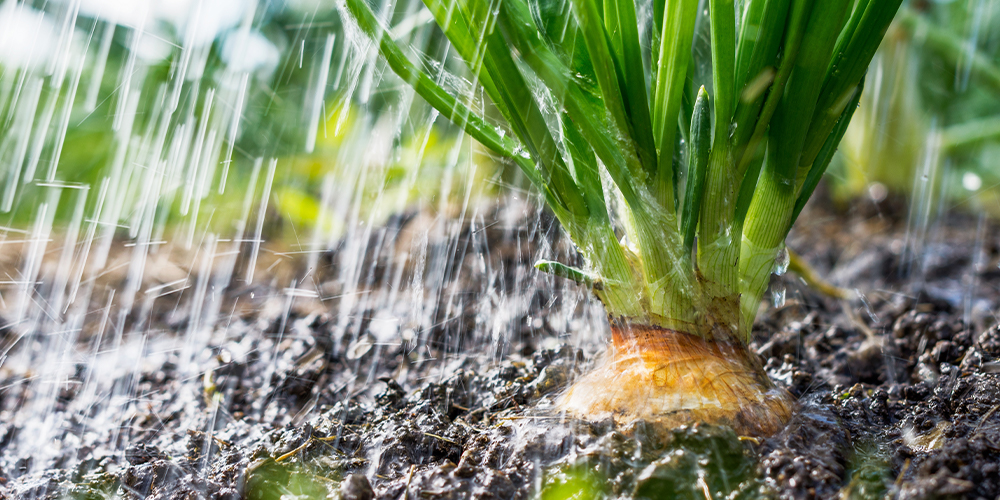In Costa Rica, a nation renowned for its lush landscapes and agricultural prowess, recent climatic shifts are casting long shadows over its verdant fields. As specialists from various research centers and institutions report, the increasing intensity and frequency of rainfall are imperiling the production of vegetables and leafy greens, threatening the backbone of the local and regional food supply.
Soggy Soils and Stressed Crops
The primary issue, as elucidated by Johaner Rosales, a specialist in Agricultural Meteorology from the National University (UNA), is the flooding that results from relentless rains. This saturation leads to ‘drowning’ of roots, fundamentally compromising plant health. “Vegetables are particularly vulnerable,” Rosales notes, “as the damp conditions favor the proliferation of fungi and bacteria, which prey on the stressed plants.” This situation is acutely evident in crops like leafy vegetables and tomatoes, where excess moisture adversely affects quality, taste, and texture.
Pestilence and Plague: The Snail’s Pace of Destruction
The deluge brings more than just water; it heralds a surge in pests, such as snails and slugs, which are particularly fond of the moist conditions. These mollusks wreak havoc on crops like lettuce, gnawing away at leaves and compromising the harvest. The agricultural community watches warily as their green seas are slowly nibbled into oblivion by these slow-moving but relentless pests.
Forecasting Fears: The Hurricane Season and La Niña
Raquel Ramírez Carranza, a faculty member from the School of Agronomy at the University of Costa Rica (UCR), points out that the expected intensification of rains, coupled with the hurricane season running from June to November, spells trouble. The phenomenon known as La Niña, which the U.S. National Oceanic and Atmospheric Administration (NOAA) predicts might develop between July and September, exacerbates these conditions. La Niña is part of the El Niño Southern Oscillation (ENSO) cycle and is known for cooling large swaths of the tropical Pacific Ocean, thereby significantly boosting rainfall levels.
Local Farmers’ Lament
On the ground, the impact is palpable and distressing. Luis Ángel Montero, a producer of lettuce, celery, cilantro, and other vegetables in El Guarco, Cartago, recounts the first waves of rain in June that have already inflicted damage on his crops. In response, he’s been forced to implement drainage solutions in a bid to mitigate further impacts.
Similarly, Guido Bennett, a producer of sweet peppers and tomatoes in Cervantes, Cartago, observes the dual threat of torrential rains: not only do they knock flowers from plants, reducing yield, but they also escalate pest infestations. Bennett is now focused on managing the production he was able to plant before the rains began, though he remains concerned about the potential for increased rainfall intensity.
Broader Sectoral Impact: Livestock and Infrastructure
The ripple effects of excessive rainfall extend beyond crops to the livestock sector and infrastructure. Luis Diego Obando, executive director of the Livestock Corporation (Corfoga), notes that flooding damages pastures, vital for animal feed, prompting a push for producers to store reserves. Additionally, rain-induced landslides block roads, complicating the transportation of livestock to slaughterhouses and ultimately impacting meat and dairy supplies.
Oscar Arias Morera, president of the National Chamber of Agriculture and Agroindustry (CNAA), echoes these concerns, highlighting how heavy rains cause landslides that disrupt product transport. The occasional strong winds, sometimes escalating to tornado-like conditions, further threaten agricultural structures, including greenhouses.
Government and Agro-Industry Response
Fernando Vargas, Deputy Minister of the Ministry of Agriculture and Livestock (MAG), asserts that all agricultural activities are vulnerable to rainfall excess. The onset of the rainy season prompts farmers to plant crops, including vegetables, roots, and tubers, with outcomes heavily dependent on the specific geographic precipitation levels. The MAG continues to monitor these impacts across its 84 extension agencies nationwide, aiming to cushion the sector against the whims of weather.
A Climate Challenge
As Costa Rica faces these environmental trials, the resilience of its agriculture hangs in the balance. The ability of farmers to adapt to changing weather patterns and the proactive measures taken by the government will be crucial in safeguarding the nation’s agricultural heritage and food security. This unfolding story is a testament to the broader challenges posed by climate change, demanding innovative solutions and steadfast resolve from all stakeholders involved.

